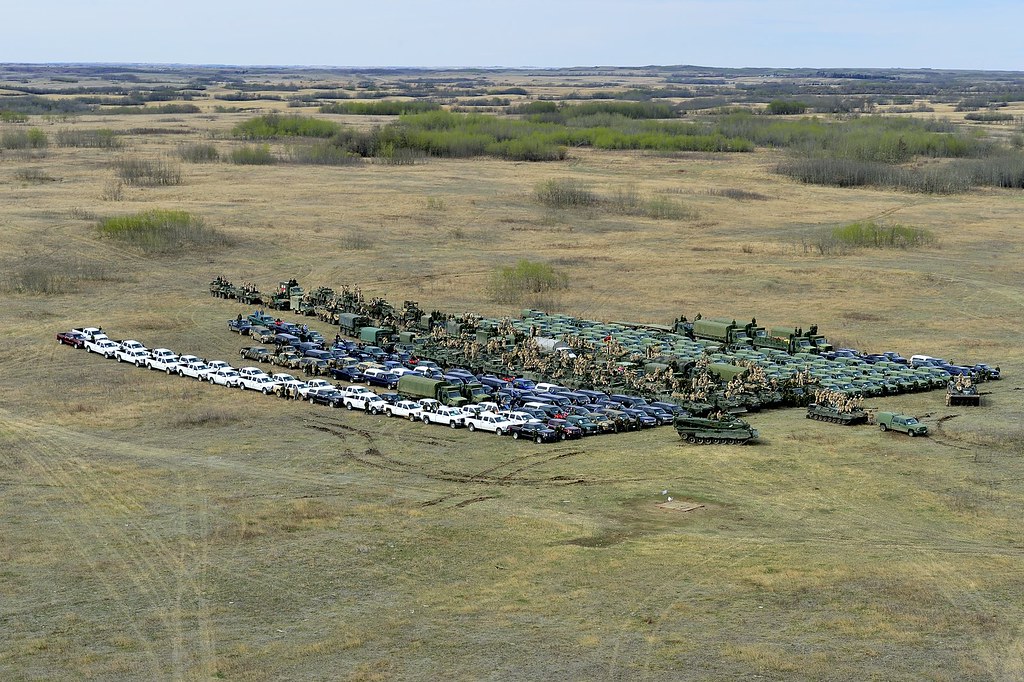DND Press Release
May 19, 2016 – Ottawa – National Defence / Canadian Armed Forces
As part of the Government of Canada’s expanded contribution to multinational efforts to degrade and defeat the so-called Islamic State of Iraq and the Levant (ISIL), the Canadian Armed Forces (CAF) recently added three CH-146 Griffon helicopters, an all-source intelligence centre, and additional trainers to Operation IMPACT.
The three CH-146 Griffon helicopters will enhance in-theatre tactical transport, including medical evacuations if required. The Griffons and their crews excel in the tactical transportation of troops and materiel. A variety of self-defence weapons are fitted to the aircraft for the deployment.
| Members of the Canadian Armed Forces load CH-146 Griffon helicopters, which are deploying as part of Operation IMPACT, into a CC-177 Globemaster aircraft at Canadian Forces Base Trenton, Ontario, on May 4, 2016. |
As a part of Joint Task Force-Iraq, the CAF officially opened an all-source intelligence centre, responsible for collecting, synthesizing, and analyzing information derived from a variety of sources. This intelligence is then used to inform operational planning, ultimately contributing to the protection of Coalition forces and the conduct of Coalition operations.
The additional tactical aviation, intelligence and training personnel are part of Canada’s enhanced mission that will eventually see around 830 CAF members deployed as part of Canada’s contribution to Coalition efforts to improve the security of Iraq and the region. These adjustments of personnel and capabilities are expected to be completed by late summer.
Under the enhanced mission, Canada is tripling the size of its train, advise, and assist mission to help Iraqi Security Forces plan and conduct military operations against ISIL.
“These new capabilities underscore Canada’s unwavering commitment to the Global Coalition and the fight against ISIL. Canada’s expanded mission is setting the conditions for Iraqi security forces and regional partners to achieve long-term success by enabling them to effectively plan and execute military operations aimed at defeating ISIL and improving security and stability in the region.” - Harjit S. Sajjan, Defence Minister
“The fight against ISIL depends on credible, integrated, and timely intelligence, which is essential in planning and executing military operations. The all-source intelligence centre will enhance our situational awareness along with that of the Coalition. Griffon helicopters will provide effective in-theatre tactical transport, and will enhance the capabilities of our trainers in Iraq. All of these Canadian assets will make significant contributions to Coalition operations.” - General Jonathan Vance, Chief of the Defence Staff
The additional tactical aviation, intelligence and training personnel are part of Canada’s enhanced mission that will eventually see around 830 CAF members deployed as part of Canada’s contribution to Coalition efforts to improve the security of Iraq and the region. These adjustments of personnel and capabilities are expected to be completed by late summer.
Under the enhanced mission, Canada is tripling the size of its train, advise, and assist mission to help Iraqi Security Forces plan and conduct military operations against ISIL.
“These new capabilities underscore Canada’s unwavering commitment to the Global Coalition and the fight against ISIL. Canada’s expanded mission is setting the conditions for Iraqi security forces and regional partners to achieve long-term success by enabling them to effectively plan and execute military operations aimed at defeating ISIL and improving security and stability in the region.” - Harjit S. Sajjan, Defence Minister
“The fight against ISIL depends on credible, integrated, and timely intelligence, which is essential in planning and executing military operations. The all-source intelligence centre will enhance our situational awareness along with that of the Coalition. Griffon helicopters will provide effective in-theatre tactical transport, and will enhance the capabilities of our trainers in Iraq. All of these Canadian assets will make significant contributions to Coalition operations.” - General Jonathan Vance, Chief of the Defence Staff
